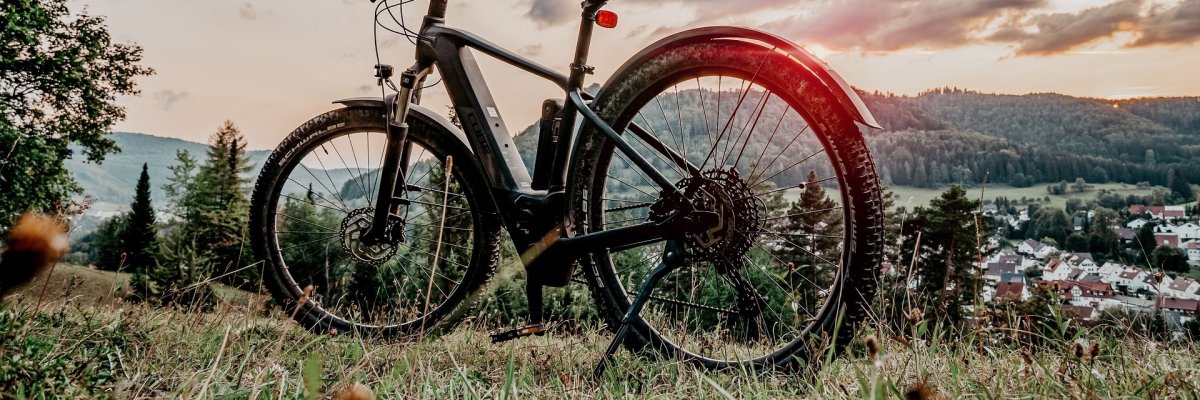Project
The project
The Green Trails are a project jointly implemented by 15 municipalities (Bad Arolsen, Bad Wildungen, Battenberg, Diemelsee, Diemelstadt, Edertal, Hatzfeld, Korbach, Lichtenfels, Twistetal, Vöhl, Volkmarsen, Waldeck, Willingen and the district). Around 200 kilometres of trails are to be created in the participating municipalities. In individual trail areas, the newly built trails will be combined to form circular trails. These areas will be connected to each other by about 200 kilometres of already existing trails. The aim is to promote tourism in the region, to create an additional recreational offer for the population and to convey an understanding for mutual cooperation, nature and its creatures.
When many people hear the words "trails" or "trail parks", they think of routes where only sporty and experienced mountain bikers have fun. But the Green Trails are about something completely different. In the district, trails are being built that do not yet exist in this region. Children, youths, adults and seniors should feel comfortable on the trails and be able to ride them without any problems. No special mountain bike is required for this. The Green Trails are thus under the motto "Trails for everyone".
Frequently asked questions:
Can the connecting paths be routed past shops or similar?
Yes. It is planned to define the connecting routes in such a way that they bring the most benefit to the local businesses.
Are associations such as NABU involved?
From the beginning of this project, the environmental service, as the approval authority, as well as the district administration with the district heads and HessenForst were involved. In addition, interest groups such as NABU have been and will continue to be involved in the future.
Will nature be affected by the project?
One of the aims of this project is to bring the forest and nature closer to the users. One of the activity pillars explicitly includes the experience of nature. Thus, it is of great concern to all participants to burden nature as little as possible. For this reason, the environmental service, as the licensing authority, as well as the district administration with the district management and Hessen Forst were involved from the outset. The project office also has a very large database of information on nature conservation law. These are taken into account in the planning and can be bypassed from the outset. In addition, indications from stakeholders are also included in the planning.
Aren't we destroying the rest of our nature with this project?
The trails are laid out in a very nature-friendly way. Often you don't even need an additional surface, but use the materials on site. In addition, no large excavators or other tools are needed, so that the area around the trail does not suffer any major damage. In addition, critical areas are avoided.
Is there a risk of erosion on the newly built trails?
In contrast to "wild" trails, which often run steeply through the terrain or forest roads with a gradient of over 10%, the incline of the trails is rather low. In addition, the trails are designed/built in such a way that the water does not run off on the trails and thus cannot cause erosion gullies or the like. High-quality construction channels the water in such a way that erosion does not occur in the first place.
Will the game be affected by the trail parks?
Use of the trails is generally limited to daytime. This means that the activity times of humans and animals do not overlap. Experiences from Willingen have confirmed that the animals are hardly or not at all affected by the mountain bikers.
At what times can the trails be ridden?
General rules for the use of the trails are to be laid down, which in principle also prohibit use in the dark.
Where can visitors dispose of their rubbish?
The aim is to create more awareness for nature through various marketing measures. In the general rules of use, it is pointed out among other things that rubbish is to be taken away again. Service stations and the like should also provide opportunities to dispose of rubbish.
Does this project not lead to collisions between different user groups (farmers, pedestrians, horse riders, etc.)?
The bicycle market is booming and in many areas, also in the district of Waldeck-Frankenberg, cyclists are becoming independent. People cycle on footpaths, field and forest paths or even in the forest, where visually there could be a path. This process cannot be prevented. However, it is possible to directly influence where cyclists ride. In order to be able to do this, an offer must be created that creates the incentive to want to cycle there. This is what the project achieves. Cyclists are guided along the desired trails and paths, thus calming the potential for conflict between the user groups. In addition, "wild riding" is prevented and nature is relieved.
Will construction also take place on private land?
For the trail parks, areas were selected that are in public ownership. There are no plans to build on private land.
Why is the southern district (apart from Battenberg and Hatzfeld) not participating in this project?
In 2019, a public-law agreement for a feasibility study was concluded with the 14 municipalities that wanted to participate in the planning. At that time, the southern district decided not to participate in this project. At that time, however, the objectives were not as clearly defined as they are now. However, the municipalities still have the option of joining the special purpose association.
How will the connection to Battenberg and Hatzfeld be created?
When the trail parks are gradually built in the district municipalities, mountain bikers will first have to ride through the municipalities that are not currently participating in the project. However, the neighbouring municipalities in NRW have already expressed great interest. Therefore, there is also the possibility of creating the connection via NRW.
